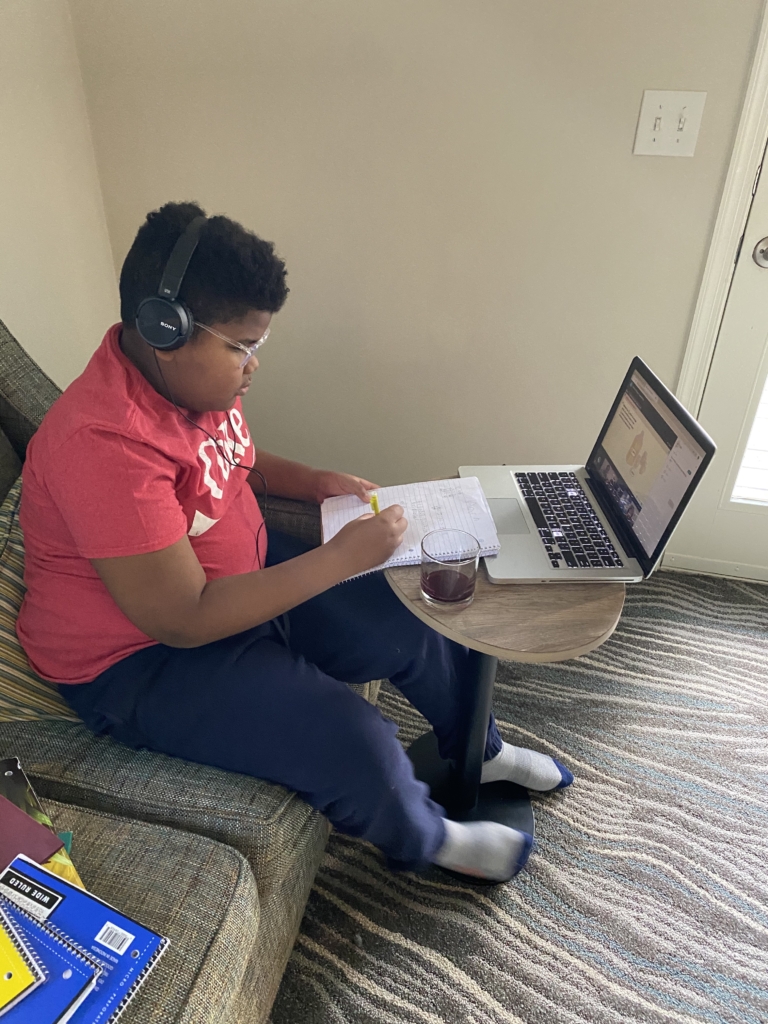I’ve been homeschooling for 7 years and I run the Cleverly Changing Homeschool Podcast to help support diverse families who choose to homeschool. Creating an efficient homeschooling space doesn’t have to cost a lot of money, it just takes understanding about what should take top priority in your home.
Education is essential in our daily lives as it affects most of our life’s choices, our financial habits, and our voting decisions. As we progress, more educational options are emerging, with many families choosing to homeschool, especially during the current COVID-19 pandemic.
Parents have varied reasons for choosing to homeschool their kids, being dissatisfied with the instruction in formal schools and school environments. When you choose to homeschool your children, you have to make your home conducive to learning. Here are a few ideas on how to turn your home into a favorable learning environment.
1. Create a Dedicated Learning Space
You may be tempted to use your couch or dining room table as a learning space, but these areas are not suitable for learning. Dedicate a room to learning as it will enable concentration on schoolwork. A dedicated school space should be open and large enough. Consider a working space with a desk or table. Turn the space into a learning center by adding bookshelves to store learning and reading materials. Ensure that the room is big enough to store everything associated with school work.
When choosing a learning space, consider the amount of natural light that gets into the room. It won’t always be sunny outside, so ensure that the room has enough light fixtures to keep the room bright even on gloomy and dark days. The dedicated learning space should only be used for schoolwork and not other household activities. If the room is used as a playroom, the kids might lose their focus on learning. You might also lose learning supplies when using the room for other activities.
2. Make the Space Comfortable
Ensure your chosen learning space has good airflow and has good insulation. You wouldn’t want to have a room that gets hot during the summer and chilly during winter. If your chosen space is a basement or a garage, install an HVAC system to control the temperature. This will ensure that your children focus on schoolwork. You can also replace the door with a sliding barn door. Barn doors are excellent for large open spaces as you can leave them open for comfortable airflow into the room. Ensure that the door has good barn door handles to enable the children to open the door without difficulty.
It is good to have windows that let in natural light; however, you should install curtains or blinds if there is direct sunlight as it can warm the room to uncomfortable levels. Also, it might be boring for kids to sit in a chair the whole day. Create various seating options to make the space comfy for the kid who wants to sit on a beanbag chair or the floor. The learning room should also be free of noise distractions, so instruct anyone who is not participating in homeschooling to stay away from the room when learning is in session.
3. Plan for Outdoor Activities
While it is good for the children to spend as much time as they can in a home school classroom, they need a break from time to time. When you have good weather, go for outdoor activities or have the class outdoors. You can also read on the couch or have a lesson in the kitchen. There are endless things you can do outside a classroom setting to improve the learning process. Ensure that the learners get out of the classroom several times a month or at least once a week.
Apart from an indoor learning space, homeschool parents can create an outside space to learn on nicer days. Choose quality furniture for space. Also, set up a garden, if you have space, to use as a lesson when the weather is pleasant. Please do not allow your children to complete their assignments in their bedrooms often.
Do not forget to schedule breaks during the day to go to the bathroom and eat. Have a break for morning snacks or a play break after lunch. As you continue with your homeschooling schedule, you will notice the breaks’ ideal time and incorporate them into your daily program.
When choosing a curriculum for your children, you can find one suited for your child’s age on the internet. Here, you can access curriculum lesson planners and guides. It is also good to join a local homeschooling support group to assist each other with emerging issues and questions. With the right setting, tools, and supplies, you can make your home an excellent learning environment.



